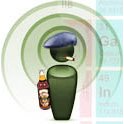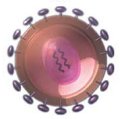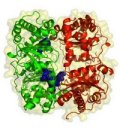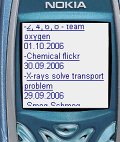NIST physicists have taken a step towards making entanglement, the quantum phenomenon Einstein referred to as “spooky action at a distance” – into a practical tool.
The team demonstrated a method for refining entangled atom pairs (a process called purification) so they might be used in quantum computers, communications systems with potentially “unbreakable” data encryption, and highly accurate atomic clocks.
The research reported in today’s issue of Nature marks the first time atoms have been both entangled and subsequently purified. This had only been done before with entangled photons. The new experiment entangles two pairs of atoms but measures only one pair.
According to NASA, Einstein never liked entanglement as it seemed to run counter to the central tenet of his theory of relativity that nothing, not even information, could travel faster than the speed of light. Because it is possible to prepare two particles in a single quantum state so that when one is particle is observed, the other will be observed simultaneously to be in the complimentary state and vice versa. As a result, measurements performed on one system seem to be instantaneously influencing other systems with which it is entangled.
However, although two entangled systems appear to interact even though they are separated no useful “information” can be transmitted in this way, which means causality is not compromised and Einstein’s theory remains intact.
 As antibiotics fall to bacterial resistance one by one, it is essential that medicinal chemists keep ahead of the game by finding compounds with new modes of attack. Recently a new antibiotic, platensimycin has been found to act potently through a novel mechanism. Now, US chemists have devised a total synthesis for this unique compound and tracked their progress using mass spectrometry and NMR spectroscopy.
As antibiotics fall to bacterial resistance one by one, it is essential that medicinal chemists keep ahead of the game by finding compounds with new modes of attack. Recently a new antibiotic, platensimycin has been found to act potently through a novel mechanism. Now, US chemists have devised a total synthesis for this unique compound and tracked their progress using mass spectrometry and NMR spectroscopy. I received a job ad indirectly from the Living Fuel website today, it seemed like a fairly run of the mill science writing job asking for a ghost writer-researcher to assist in writing a weekly health newsletter etc…
I received a job ad indirectly from the Living Fuel website today, it seemed like a fairly run of the mill science writing job asking for a ghost writer-researcher to assist in writing a weekly health newsletter etc… Aside from write-ups in the New York Times and the journal Nature, there has been very little in the media recently concerning the plight of five Bulgarian nurses and a Palestinian doctor who face death sentences in Libya. The six are charged with deliberately infecting hundreds of children with HIV, the AIDS virus, in 1998. The charges are nothing more than “preposterous” says the NYT, given that infections appeared before these medics began work at the hospital in question! The NYT suggests that this “looming miscarriage of justice demands a strong warning to the Libyan leader, Muammar el-Qaddafi, that his efforts to join the ranks of peaceable nations will suffer if the medical workers are made the scapegoats for the failure of Libya’s own health system.” The evidence points to wholly inadequate hygiene as being to blame rather than the accused individuals.
Aside from write-ups in the New York Times and the journal Nature, there has been very little in the media recently concerning the plight of five Bulgarian nurses and a Palestinian doctor who face death sentences in Libya. The six are charged with deliberately infecting hundreds of children with HIV, the AIDS virus, in 1998. The charges are nothing more than “preposterous” says the NYT, given that infections appeared before these medics began work at the hospital in question! The NYT suggests that this “looming miscarriage of justice demands a strong warning to the Libyan leader, Muammar el-Qaddafi, that his efforts to join the ranks of peaceable nations will suffer if the medical workers are made the scapegoats for the failure of Libya’s own health system.” The evidence points to wholly inadequate hygiene as being to blame rather than the accused individuals. The six medics were arrested in 1999. Confessions were wrought from each of them under torture according to human rights organisations, but the individuals later retracted their statements. It seems to be beyond doubt that the six are not guilty yet they have been under a death sentence since 2004. Nature suggests that the silence of scientists over this case is due to a hope that diplomacy might resolve the issue. After all, the NYT reports, the White House currently has Libya on a pedestal as an ideal state that no longer abides weapons of mass destruction.
The six medics were arrested in 1999. Confessions were wrought from each of them under torture according to human rights organisations, but the individuals later retracted their statements. It seems to be beyond doubt that the six are not guilty yet they have been under a death sentence since 2004. Nature suggests that the silence of scientists over this case is due to a hope that diplomacy might resolve the issue. After all, the NYT reports, the White House currently has Libya on a pedestal as an ideal state that no longer abides weapons of mass destruction. The day the UK’s medicines approval agency NICE, announces that certain Alzheimer’s drugs are to be limited to those in the latter stages of the disease to get the best value for money, I read a Nature press release announcing a novel approach to treating the disease based on supercharging an enzyme that looks like the video game character Pac-man. US researchers have determined the crystal structure of a protein-degrading enzyme as it binds to its natural protein substrates.
The day the UK’s medicines approval agency NICE, announces that certain Alzheimer’s drugs are to be limited to those in the latter stages of the disease to get the best value for money, I read a Nature press release announcing a novel approach to treating the disease based on supercharging an enzyme that looks like the video game character Pac-man. US researchers have determined the crystal structure of a protein-degrading enzyme as it binds to its natural protein substrates. We’re beta testing a new way for Sciencebase readers to grab the science headlines. You can now access Sciencebase science news headlines on your WAP phone and similar devices, no need to tell us your phone number or anything, just follow this science wap link.
We’re beta testing a new way for Sciencebase readers to grab the science headlines. You can now access Sciencebase science news headlines on your WAP phone and similar devices, no need to tell us your phone number or anything, just follow this science wap link.